|
 |
 Автор: Williams Автор: Williams
 Дата: 30 апреля 2020 Дата: 30 апреля 2020
 Просмотров: 2 092 Просмотров: 2 092 |
| |
Mary Anderson William Woessner Randall Hunt - Applied Groundwater Modeling, 2nd Edition
Simulation of Flow and Advective Transport
Elsevier, 2015
pdf, 602 pages, english
ISBN: 978-0-120-58103-0
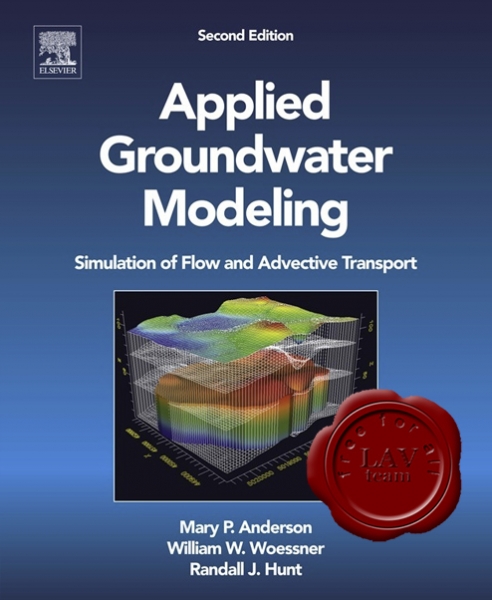
This second edition is extensively revised throughout with expanded discussion of modelling fundamentals and coverage of advances in model calibration and uncertainty analysis that are revolutionising the science of groundwater modelling. The text is intended for undergraduate and graduate level courses in applied groundwater modelling and as a comprehensive reference for environmental consultants and scientists/engineers in industry and governmental agencies.
Key Features
- Explains how to formulate a conceptual model of a groundwater system and translate it into a numerical model
- Demonstrates how modelling concepts, including boundary conditions, are implemented in two groundwater flow codes - MODFLOW (for finite differences) and FEFLOW (for finite elements)
- Discusses particle tracking methods and codes for flowpath analysis and advective transport of contaminants
- Summaries parameter estimation and uncertainty analysis approaches using the code PEST to illustrate how concepts are implemented
- Discusses modelling ethics and preparation of the modelling report
- Includes Boxes that amplify and supplement topics covered in the text
- Each chapter presents lists of common modelling errors and problem sets that illustrate concepts
For graduate students and practising professionals in groundwater hydrology, civil engineers and environmental consultants, and scientists/engineers in industry and governmental agencies who deal with groundwater. |
| |
 Читать статью дальше (комментариев - 10)
Читать статью дальше (комментариев - 10)
| |
|
 |
 Автор: Williams Автор: Williams
 Дата: 29 апреля 2020 Дата: 29 апреля 2020
 Просмотров: 1 584 Просмотров: 1 584 |
| |
Four Dimension Technologies GeoTools v21.00
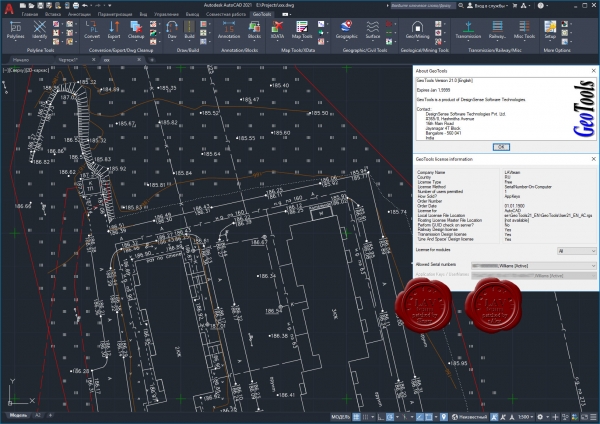
GeoTools is an add-on program for AutoCAD and Bricscad which provides you with a number of useful productivity tools that are designed exclusively for the geographic data user. It is a heterogenous collection of CAD tools that are useful for users in the mapping, surveying, GIS, facilities planning, real estate and infrastructure management industry.
GeoTools is a time-saver productivity tools built for geo-data using CAD users who want to work smart and not hard. In the AutoCAD version of GeoTools, there are a large number of AutoCAD Map tools as well that making working with object data a breeze.
GeoTools functions are arranged in easily categorized pull-down menus, toolbars and also as tabbed ribbons in AutoCAD 2013 and later versions. Some of the borad category of tools you will find in GeoTools are Polyline, Annotation, Drawing Cleanup, Digitizing, AutoCAD Map, Inquiry and so on.
|
| |
 Читать статью дальше (комментариев - 5)
Читать статью дальше (комментариев - 5)
| |
|
 |
 Автор: Williams Автор: Williams
 Дата: 28 апреля 2020 Дата: 28 апреля 2020
 Просмотров: 4 928 Просмотров: 4 928 |
| |
nanoSoft nanoCAD Конструкции v6.0.4105.12214 x64
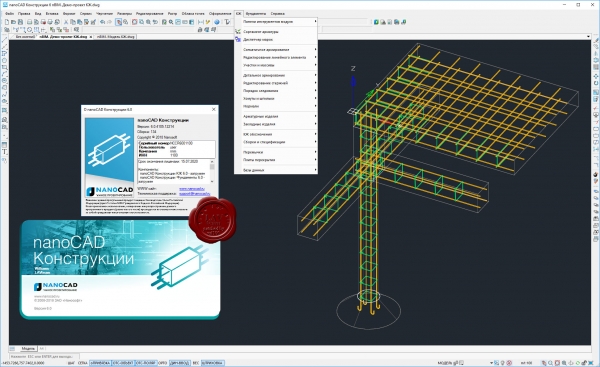
Основные функции модуля nanoCAD Конструкции – КЖ:
- разработка чертежей марок КЖ и КЖИ в соответствии с российскими стандартами;
- разработка чертежей марок КЖ и КЖИ в соответствии с ДБН В.2.6-98:2009 (Украина);
- универсальные инструменты схематичного и детального армирования;
- автоконтроль норм проектирования по СНиП 2.03.01-84, СП 52-101-2003;
- автоматическое специфицирование арматурных изделий;
- автоматическое проектирование и специфицирование сварных сеток по ГОСТ 23279-2012;
- отрисовка нестандартных арматурных изделий;
- автоматизированная отрисовка арматурных изделий: хомутов, шпилек, спиралей, фиксаторов и т.д.;
- использование стандартных и создание пользовательских закладных изделий;
- расширенные возможности работы с элементами металлопроката;
- возможность получения всех видов спецификаций, в том числе ведомости расхода стали и ведомости деталей с автоматической вставкой эскиза детали;
- подбор и проектирование перемычек;
- автоматическая генерация спецификаций и ведомостей;
- автоматизированная раскладка плит перекрытий на участках перекрытия с возможностью редактирования участка;
- обеспечение полной совместимости с чертежами, выполненными в Project StudioCS версии 5.5, 5.6, 6.0 и 7.0.
Модуль nanoCAD Конструкции – Фундаменты входит в состав программного комплекса nanoCAD Конструкции и служит для подготовки схем расположения и чертежей столбчатых фундаментов на свайном и естественном основании. Модуль поддерживает расчет основания по деформациям для фундаментов колонн промышленных и гражданских зданий, расчет свайного куста на прочность по несущей способности сваи и расчет монолитных и сборных ленточных фундаментов.
- Расчет, конструирование и получение комплекта рабочих чертежей столбчатых фундаментов на свайном и естественном основании.
- Расчет, конструирование и получение комплекта рабочих чертежей монолитных и ленточных фундаментов на свайном и естественном основании.
- Отрисовка свайных оснований различных конфигураций (с автоматическим графическим разделением элементов, различающихся по параметрам) и получение поэтапных и суммарных спецификаций по свайным полям.
- Оформление выходной документации средствами модуля «Оформление» в строгом соответствии с требованиями СПДС.
- Расчет, конструирование и получение комплекта рабочих чертежей сборных ленточных фундаментов на естественном основании и стен из блоков ФБП.
- Расчет и конструирование фундаментов производятся в соответствии со следующими нормативными документами:
- СНиП 2.02.01-83 Основания зданий и сооружений;
- Пособие по проектированию оснований зданий и сооружений (Москва, 1986 г.);
- СНиП 2.02.03-85 Свайные фундаменты;
- СП 50-102-2003 Проектирование и устройство свайных фундаментов;
- СНиП 2.01.07-85 Нагрузки и воздействия.
|
| |
 Читать статью дальше (комментариев - 24)
Читать статью дальше (комментариев - 24)
| |
|
 |
 Автор: Williams Автор: Williams
 Дата: 27 апреля 2020 Дата: 27 апреля 2020
 Просмотров: 1 187 Просмотров: 1 187 |
| |
Holm Altenbach, Andreas Öchsner - Encyclopedia of Continuum Mechanics
Springer, 2020
pdf, 2837 pages, english
ISBN: 978-3-662-55770-9
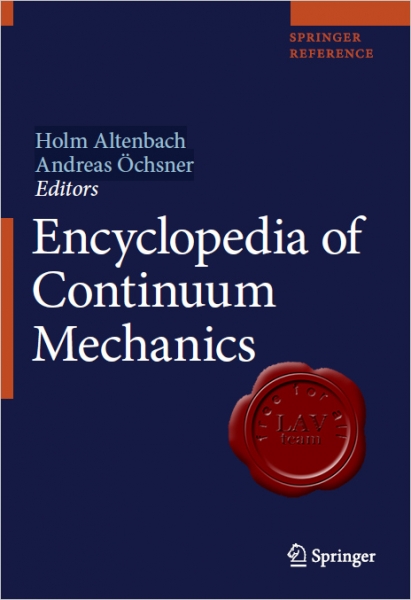
This Encyclopedia covers the entire science of continuum mechanics including the mechanics of materials and fluids. The encyclopedia comprises mathematical definitions for continuum mechanical modeling, fundamental physical concepts, mechanical modeling methodology, numerical approaches and many fundamental applications. The modelling and analytical techniques are powerful tools in mechanical civil and areospsace engineering, plus in related fields of plasticity, viscoelasticity and rheology. Tensor-based and reference-frame-independent, continuum mechanics has recently found applications in geophysics and materials. |
| |
 Читать статью дальше (комментариев - 8)
Читать статью дальше (комментариев - 8)
| |
|
 |
 Автор: Williams Автор: Williams
 Дата: 26 апреля 2020 Дата: 26 апреля 2020
 Просмотров: 1 619 Просмотров: 1 619 |
| |
CSI Bridge v22.0.0 build 1587 x64
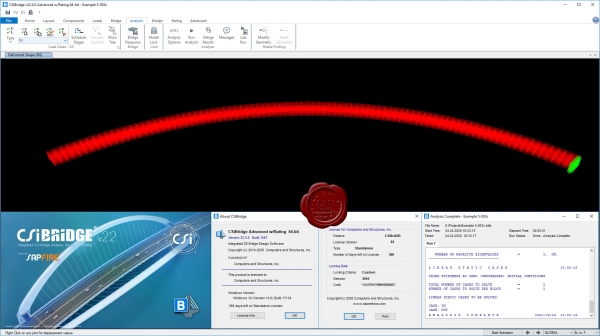
Modeling, analysis and design of bridge structures have been integrated into CSI Bridge to create the ultimate in computerized engineering tools. The ease with which all of these tasks can be accomplished makes CSI Bridge the most versatile and productive software program available on the market today.
Using CSI Bridge, engineers can easily define complex bridge geometries, boundary conditions and load cases. The bridge models are defined parametrically, using terms that are familiar to bridge engineers such as layout lines, spans, bearings, abutments, bents, hinges and post-tensioning. The software creates spine, shell or solid object models that update automatically as the bridge definition parameters are changed.
CSI Bridge design allows for quick and easy design and retrofitting of steel and concrete bridges. The parametric modeler allows the user to build simple or complex bridge models and to make changes efficiently while maintaining total control over the design process. Lanes and vehicles can be defined quickly and include width effects. Simple and practical Gantt charts are available to simulate modeling of construction sequences and scheduling.
CSI Bridge includes an easy to follow wizard that outlines the steps necessary to create a bridge model.
Completely integrated within the CSI Bridge design package is the power of the SAPFire analysis engine, including staged construction, creep and shrinkage analysis, cable tensioning to target forces, camber and shape finding, geometric nonlinearity (P-delta and large displacements), material nonlinearity (superstructure, bearings, substructure and soil supports), buckling and static and dynamic analysis. All of these apply to a single comprehensive model. In addition, AASHTO LRFD design is included with automated load combinations, superstructure design and the latest seismic design.
|
| |
 Читать статью дальше (комментариев - 16)
Читать статью дальше (комментариев - 16)
| |
|
 |
 Автор: Williams Автор: Williams
 Дата: 25 апреля 2020 Дата: 25 апреля 2020
 Просмотров: 1 489 Просмотров: 1 489 |
| |
Chuanzhi Huang - Limit Analysis Theory of the Soil Mass and Its Application
Springer, 2020
pdf, 472 pages, english
ISBN: 978-981-15-1571-2
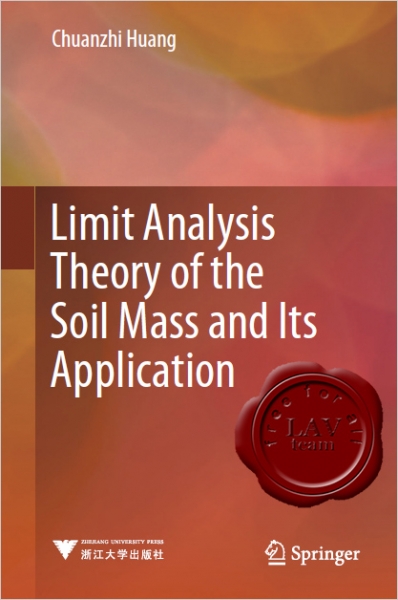
In the geotechnical engineering, stability is a key factor of the engineering success. It is one of long-term objectives for scientists and engineers to strive for limit analysis theories and methods on and for stability of the slope, ground bearing capacity, and soil pressure. For the port construction, it is developing toward the large-size and deep water areas. As the natural environment conditions, including ground, are relatively poor, it puts forward higher requirements for analysis and calculation theory on geotechnical engineering. The author and his colleagues work together to, based on the former work, make some progress by original study methods. Hereby, the study achievements are collated into a book, which is of great significance.
Main features of the book are described as follows: It provides the extremum condition of the yield function and regards it as one of fundamental equations so that one set of complete fundamental equations are available for the limit analysis, and it constitutes a complete limit equilibrium or variation issue. On this basis, a brand-new solution method—generalized limit equilibrium method—is provided, which can be mutually corroborated with limit equilibrium method, slip line method, and upper- and lower-bound plasticity analysis method. During the study on slope stability, it avoids such study model as solving the statically indeterminate problem by introducing assumptions, which is commonly applied in the classical methods; the proposed slope stability analysis method is more consummate, and the calculation results are more reliable. In the study on the ground bearing capacity, it solves not only the calculation problem on the ground bearing capacity of heterogeneous soil, but also the application scopes of calculation methods are more extensive. Therefore, all above are innovative achievements, and its brand-new limit equilibrium analysis theory is more scientific compared with the former work.
Another feature of the book is the close combination of the study and engineering practices, together with the stress on practical problems in the engineering. For example, the calculation method for the ground bearing capacity is established in consideration of port engineering features; for tens of engineering examples, different calculation methods are applied for the calculation and analysis, and it has verified that the proposed method is of extensive application prospects. |
| |
 Читать статью дальше (комментариев - 7)
Читать статью дальше (комментариев - 7)
| |
|
 |
 Автор: Williams Автор: Williams
 Дата: 24 апреля 2020 Дата: 24 апреля 2020
 Просмотров: 8 602 Просмотров: 8 602 |
| |
CSI ETABS v18.1.1 build 2148 x64 repack

The innovative and revolutionary new ETABS is the ultimate integrated software package for the structural analysis and design of buildings. Incorporating 40 years of continuous research and development, this latest ETABS offers unmatched 3D object based modeling and visualization tools, blazingly fast linear and nonlinear analytical power, sophisticated and comprehensive design capabilities for a wide-range of materials, and insightful graphic displays, reports, and schematic drawings that allow users to quickly and easily decipher and understand analysis and design results.
From the start of design conception through the production of schematic drawings, ETABS integrates every aspect of the engineering design process. Creation of models has never been easier - intuitive drawing commands allow for the rapid generation of floor and elevation framing. CAD drawings can be converted directly into ETABS models or used as templates onto which ETABS objects may be overlaid. The state-of-the-art SAPFire 64-bit solver allows extremely large and complex models to be rapidly analyzed, and supports nonlinear modeling techniques such as construction sequencing and time effects (e.g., creep and shrinkage). Design of steel and concrete frames (with automated optimization), composite beams, composite columns, steel joists, and concrete and masonry shear walls is included, as is the capacity check for steel connections and base plates. Models may be realistically rendered, and all results can be shown directly on the structure. Comprehensive and customizable reports are available for all analysis and design output, and schematic construction drawings of framing plans, schedules, details, and cross-sections may be generated for concrete and steel structures.
ETABS provides an unequaled suite of tools for structural engineers designing buildings, whether they are working on one-story industrial structures or the tallest commercial high-rises. Immensely capable, yet easy-to-use, has been the hallmark of ETABS since its introduction decades ago, and this latest release continues that tradition by providing engineers with the technologically-advanced, yet intuitive, software they require to be their most productive.
|
| |
 Читать статью дальше (комментариев - 39)
Читать статью дальше (комментариев - 39)
| |
|
 |
 Автор: Williams Автор: Williams
 Дата: 23 апреля 2020 Дата: 23 апреля 2020
 Просмотров: 2 100 Просмотров: 2 100 |
| |
SOFiSTiK 2020 SP 2020-4 Build 850 x64
SOFiSTiK – универсальный программный комплекс, использующий метод конечно-элементного анализа (МКЭ) для расчета и проектирования строительных конструкций, решения задач геотехники любой сложности, анализа газо- и гидродинамики.
Области применения: строительные конструкции; геотехнический анализ; газо- и гидродинамика.
Объекты анализа: здания и сооружения; мосты и другие транспортные сооружения; тоннели и гидротехнические сооружения.
Возможности проектирования и анализа: статистический и динамический анализ; линейная/нелинейная постановка задачи; линейные и турбулентные потоки газов и жидкости; анализ кинематически изменяемых систем.
|
| |
 Читать статью дальше (комментариев - 19)
Читать статью дальше (комментариев - 19)
| |
|
 |
 Автор: Williams Автор: Williams
 Дата: 21 апреля 2020 Дата: 21 апреля 2020
 Просмотров: 4 069 Просмотров: 4 069 |
| |
Braja Das, Nagaratnam Sivakugan - Principles of Foundation Engineering. 9th SI Edition
Cengage Learning, 2019
pdf, 884 pages, english
ISBN-13: 978-1-337-70503-5
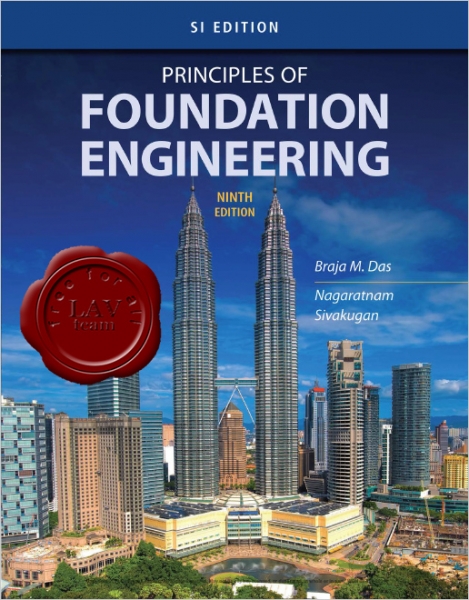
Soil mechanics and foundation engineering have developed rapidly during the last seventy years. Intensive research and observation in the field and the laboratory have refined and improved the science of foundation design. Originally published in the fall of 1983, Principles of Foundation Engineering is now in the
ninth edition. It is intended primarily for use by undergraduate civil engineering students. The use of this text throughout the world has increased greatly over the years. It has also been translated into several languages. New and improved materials that have been published in various geotechnical engineering journals and conference proceedings, consistent with the level of understanding of the intended users, have been incorporated into each edition of the text.
New to This Edition
Based on the increased developments in the field of geotechnical engineering, the authors have added three new chapters to this edition. The ninth edition of Principles of Foundation Engineering contains a total of 19 chapters. Listed here is a summary of the major revisions from the eighth edition and new additions to this edition.
- Numerous new photographs in full color have been included in various chapters as needed.
- The Introduction Chapter (Chapter 1) has been entirely revised and expanded with sections on geotechnical engineering, foundation engineering, soil exploration, ground improvement, solution methods, numerical modeling, empiricism, and literature.
- Chapter 2 on Geotechnical Properties of Soil includes new sections on the range of coefficient of consolidation and selection of shear strength parameters for design. All of the end-of-chapter problems are new.
- Chapter 3 on Natural Soil Deposits and Subsoil Exploration has an improved figure on soil behavior type chart based on cone penetration test.
- Chapter 4 on Instrumentation and Monitoring in Geotechnical Engineering is a new chapter that describes the use of instruments in geotechnical projects, such as piezometer, earth pressure cell, load cell, inclinometer, settlement plate, strain gauge, and others.
- Soil Improvement (Chapter 5) has some details on typical compaction requirements as well as improved figures in the section of precompression. About half of the problems at the end of the chapter are new.
- Chapter 6 on Shallow Foundations: Ultimate Bearing Capacity has new sections on a simple approach for bearing capacity with two-way eccentricities, and plane strain correction of friction angle.
- Chapter 7 on Ultimate Bearing Capacity on Shallow Foundation: Special Cases has a section on ultimate bearing capacity of a wedge-shaped foundation. About half of the end-of-chapter problems are new.
- Chapter 8 on Vertical Stress Increase in Soil has a new section on stress below a horizontal strip load of finite width and infinite length. The majority of the end-of-chapter problems are new.
- In Chapter 9 on Settlement of Shallow Foundations, Section 9.3 on settlement based on the theory of elasticity has been thoroughly revised with the addition of the results of the studies of Poulos and Davis (1974) and Giroud (1968). In Section 9.6, which discusses the topic of settlement of foundation on sand based on standard penetration resistance, Terzaghi and Peck’s method (1967) has been added. Elastic settlement considering soil stiffness variation with stress level is given in a new section (Section 9.7). Other additions include settlement estimation using the L1 – L2 method (Section 9.9) (Akbas and Kulhawy, 2009) and Shahriar et al.’s (2014) method to estimate elastic settlement in granular soil due to the rise of ground water table (Section 9.10). The section on tolerable settlement of buildings has been fully revised. More than half of the end-of-chapter problems are new.
- In Chapter 10 on Mat Foundations, the reinforcement design portion for the mats was removed to concentrate more on the geotechnical portion. All end-ofchapter problems are new.
- Chapter 11 on Load and Resistance Factor Design (LRFD) is a new chapter. It provides the design philosophies of the allowable stress design (ASD) and load and resistance factor design in a simple way.
- Chapter 12 on Pile Foundations has a new section defining point bearing and friction piles (Section 12.5). Section 12.5 on installation of piles has been thoroughly revised. Factor of safety for axially loaded piles suggested by USACE (1991) has been incorporated in Section 12.8 on equations for estimating pile capacity. The analysis by Poulos and Davis (1974) for estimation of elastic settlement of piles has been included in Section 9.17. About half of the end-ofchapter problems are new.
- In Chapter 13 on Drilled Shaft Foundations, several figures have been improved to aid in better interpolation for solving problems. More than half of the end-of-chapter problems are new.
- Chapter 14 on Piled Rafts—An Overview is a new chapter. It describes optimizations of the advantages of pile foundations and raft foundations for construction of very tall buildings.
- In Chapter 15 on Foundations on Difficult Soil, all but two of end-of-chapter problems are new.
- Chapter 16 on Lateral Earth Pressure has two new sections on (a) generalized case for Rankine seismic active pressure—granular backfill (Section 16.5), and (B) solution for passive earth pressure by lower bound theorem of plasticity (Section 16.15). The section on passive force on walls with earthquake forces (Section 16.7) has been expanded. All end-of-chapter problems are new.
- In Chapter 17 on Retaining Walls, a new section (Section 17.10) on gravity retaining wall design for earthquake conditions has been added. Discussion on the properties of geotextile has been expanded along with some new geotextile photographs. More than half of the end-of-chapter problems are new.
- Chapter 18 on Sheet-Pile Walls has three new sections added: (a) cantilever sheet piles penetrating sandy soil—a simplified approach (Section 18.8); (B) free earth support method for penetration of sandy soil—a simplified approach (Section 18.10); and holding capacity of deadman anchors (Section 18.18). All end-of-chapter problems are new.
- In Chapter 19 on Braced Cuts, all end-of-chapter problems are new.
- Each chapter now includes a Summary section. New and revised example problems are presented in various chapters as needed.
|
| |
 Читать статью дальше (комментариев - 20)
Читать статью дальше (комментариев - 20)
| |
|
 |
| ПОИСК ПО САЙТУ |
 |
|
 |
|